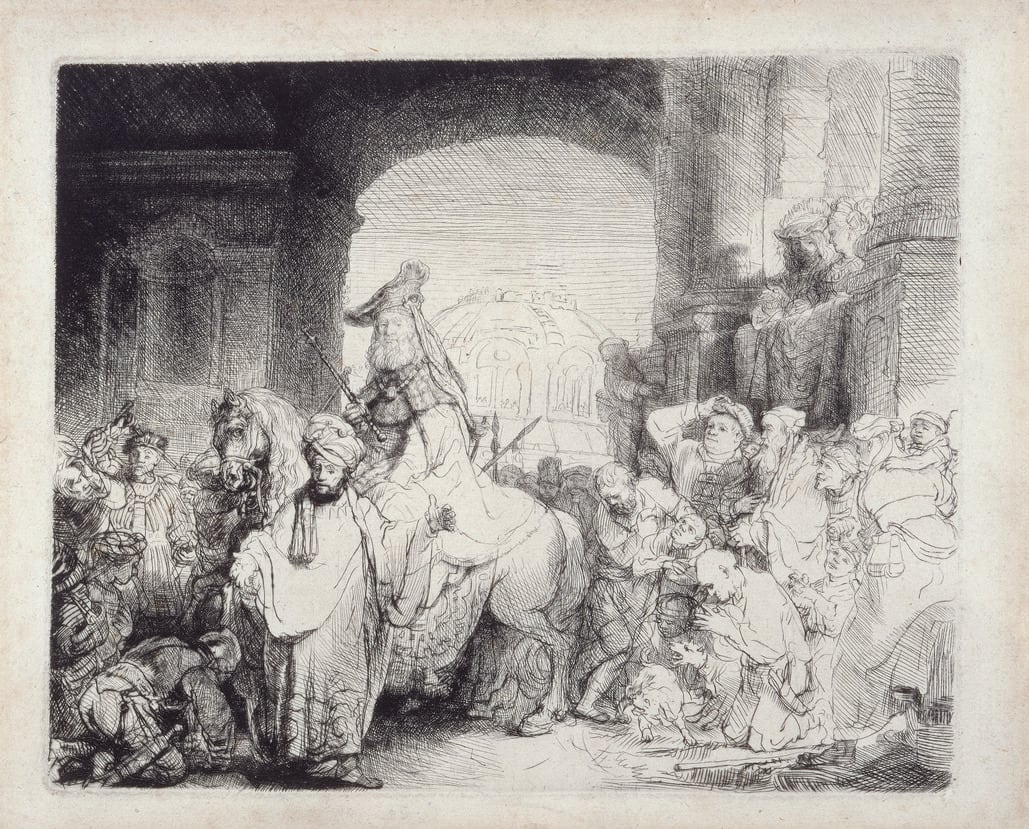
- Artist/Maker:
- Rembrandt van Rijn
- Bio:
- Dutch, 1606-1669
- Title:
- The Triumph of Mordecai
- Date:
- c. 1641
- Medium:
- Etching and drypoint on paper
- Dimensions:
- 6 15/16 × 8 7/16 in. (17.7 × 21.5 cm)
- Credit Line:
- Gift of Mrs. Leo Wallerstein
- Accession Number:
- JM 9-58
Not On View
For eighty years from 1568 to 1648 the Netherlands fought for its independence from Spanish rule and the mandated religion that was forced upon it. During this struggle, the Dutch identified with the children of Israel. Consequently, in 17th century Holland, the story of Esther, with its clear political overtones, became a popular theme in art; Mordecai and the Jews represented the Dutch, and Haman was interpreted as the Spanish tyrant.
Rembrandt used his unmatched technique to probe the psychological truth of his characters. His Triumph of Mordecai presents a modest procession with a subdued, introspective hero viewed by King Ahasuerus and Esther and a seemingly impromptu crowd of bystanders.
Rembrandt used his unmatched technique to probe the psychological truth of his characters. His Triumph of Mordecai presents a modest procession with a subdued, introspective hero viewed by King Ahasuerus and Esther and a seemingly impromptu crowd of bystanders.
Information may change as a result of ongoing research.